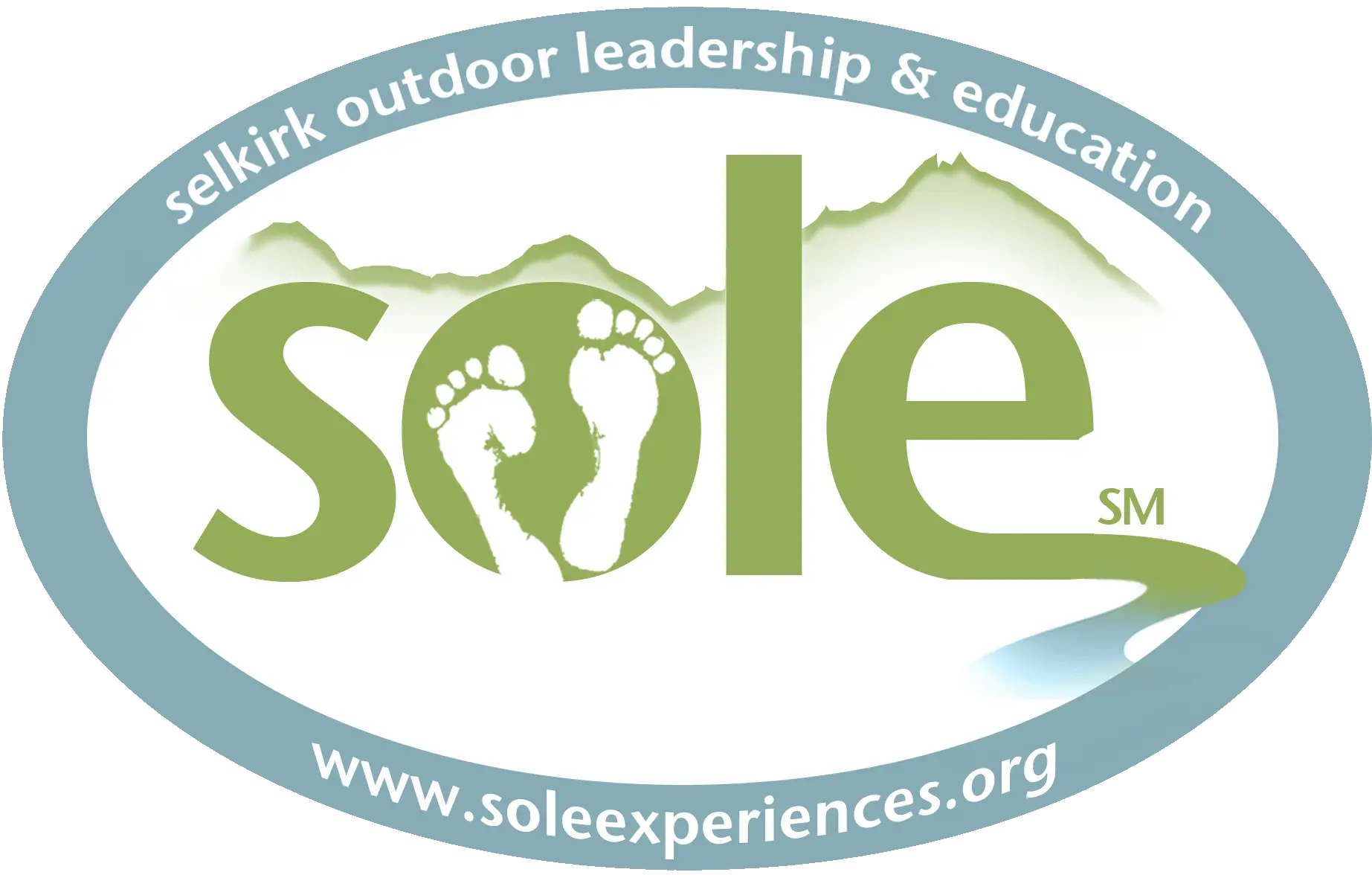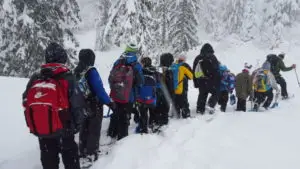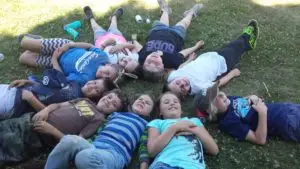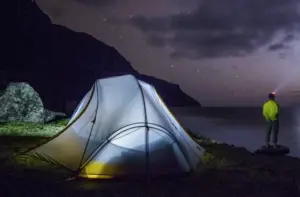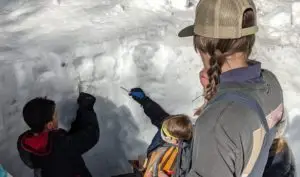I moved to Sandpoint, Idaho just over a month ago to work a winter season with Selkirk Outdoor Leadership & Education (SOLE) to grow as an outdoor educator. Already two weeks into SOLE’s SnowSchool Experience SM Program, and it’s been a blast getting students out and about exploring and learning in their backyards – even in the dead of winter. SOLE’s SnowSchool Experience Program is part of the nation’s largest on-snow outdoor education program in partnership with the Winter Wildland’s Alliance.
 One of the goals of the nationally developed program is to encourage students to develop an affinity with their local environs and gain a better understanding of the importance of mountain snowpack and its relationship to their local community resources. Encouraging students to make earnest, personal observations is a crucial part of that process. As an educator, it can be a challenge to elicit such responses—Often students are challenged to differentiate between “identifying,” and “observing.” For example, pointing at the ground, and asking students what they observe, students often say simply “snow,” and not “cold, sugary looking stuff.”
One of the goals of the nationally developed program is to encourage students to develop an affinity with their local environs and gain a better understanding of the importance of mountain snowpack and its relationship to their local community resources. Encouraging students to make earnest, personal observations is a crucial part of that process. As an educator, it can be a challenge to elicit such responses—Often students are challenged to differentiate between “identifying,” and “observing.” For example, pointing at the ground, and asking students what they observe, students often say simply “snow,” and not “cold, sugary looking stuff.”
Here are a couple of tricks I have found to work well in the field:
- Give the students a reason to look beyond the obvious. Try showing students two similar specimens and asking them if they are the same species? Why or why not? Which one is better at growing here? How do you know? Encouraging these connections gives students a reason to remember what they’ve seen and look beyond what they know, and gives them a chance to relate that information to the ecosystem at large.
- Encourage students to ask the three following questions about your specimen outloud:
- “What do you notice about it?”
- “What do you wonder about it?”
- “What does it reminds you of?”
These questions have been shown to encourage deeper engagement and personal connections between students and subject matter.
 As part of the SnowSchool curriculum, students use magnifying loops to observe snowflakes to make connections to Snow-Water Equivalency (SWE) in the snowpack. Using these prompts will encourage students to make more creative connections that will be more easily remembered later. Rather than saying that the snow crystals “look like snow” or “look icy,” using these prompts will encourage more personal responses such as “reminds me of a pepsi can” or my personal favorite from the last course, “reminds me of smushed together crystal turdballs.” While these answers might seem silly and off topic, they are actually indicative of a deeper cognitive process of connection-making students are involved in. When teaching in the field, there are few things more disheartening than prompting students to make observations and getting responses that limit exploration. These strategies will help minimize that possibility, and they will encourage students to have better recall when thinking back on their time in the field from the classroom.
As part of the SnowSchool curriculum, students use magnifying loops to observe snowflakes to make connections to Snow-Water Equivalency (SWE) in the snowpack. Using these prompts will encourage students to make more creative connections that will be more easily remembered later. Rather than saying that the snow crystals “look like snow” or “look icy,” using these prompts will encourage more personal responses such as “reminds me of a pepsi can” or my personal favorite from the last course, “reminds me of smushed together crystal turdballs.” While these answers might seem silly and off topic, they are actually indicative of a deeper cognitive process of connection-making students are involved in. When teaching in the field, there are few things more disheartening than prompting students to make observations and getting responses that limit exploration. These strategies will help minimize that possibility, and they will encourage students to have better recall when thinking back on their time in the field from the classroom.
Student observing snow crystals or “pepsi cans” using a magnifying loop.
See you on the mountain,
